Just now, Tiangong-1 has fallen, and the Chinese space station is about to take off.
Of the Beijing aerospace flight control center, and the monitoring analysis of the relevant authorities, Beijing time on April 2, 2018, 8 around 15 points, when flying in space for six and a half years of Tiangong-1 target spacecraft has again into the atmosphere, and then into the drop zone is located in the middle of the south Pacific area, most of the components in the process of reentry atmosphere ablation were destroyed and end its historical mission.
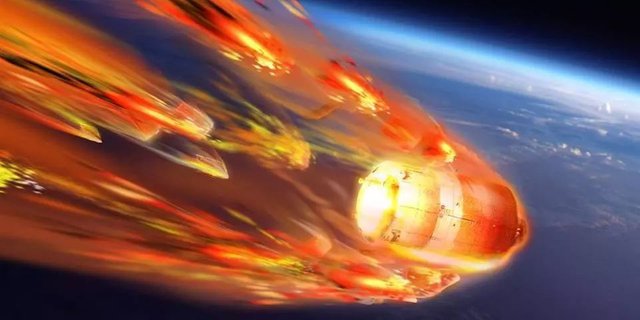
And at the same time, just a few days ago, a new generation of Chinese core module of the station has publicly for the first time, is expected in 2020 before and after the use of the Long March 5B rocket, then after the launch of dozens of assembly, China will have their own "space age". It can be said that this moment in the moment is like a scheduled coincidence connected the rise of China's space station.
What is spacecraft re-entry?
Since the launch of the first man-made earth satellite in 1957, space has become more and more lively. Up to this day, humans have launched nearly 10,000 spacecraft, about 90% of which are satellites, and most of these spacecraft are in near-earth orbit, 300km~1000km above the surface. In the spacecraft to complete the task, life expires, they will keep out under the action of gravity, originally's orbit, due to the orbital decay gradually to the earth, eventually in the process of entering the atmosphere burned out. In particular, the spacecraft from entering the atmosphere to the final disintegration is divided into three steps: the separation of large equipment, the disintegration of the spacecraft, and the burning of debris. Combined with the ground control system and the parameters of entry into the atmosphere spacecraft, we are able to make a rough measurement and control of the orbits of the "little guys" that are returning to earth.

1. Separation and disintegration of large equipment.
Is internationally recognized as the height of the atmosphere of Carmen line for 100 km distance from the surface of the earth, and when the spacecraft began to the height of the fall, when placed on the outside of the spacecraft's solar panels, large antenna device will start to be cut off by gradually thick atmosphere tear it. In the powerful pneumatic friction resistance and severe, these components will be constantly fall off from the main body structure of the spacecraft, however, it is important to note that most of these components finally won't be down to the ground, the end of them is the ablation in the atmosphere.
2. The disintegration of spacecraft.
As fall further reduce the height of the spacecraft, in when you arrive at an altitude of about 80 km away from the ground, the rest of the spacecraft received pneumatic friction and aerodynamic heating effect will be more and more obvious, at high temperatures and atmospheric drag, under the dual function of the body of the spacecraft will happen serious collapse, internal and external devices will be separation, after the collapse of the pieces will be constantly in the process of falling ablation heat. If the spacecraft still carries the remaining fuel during the process, the resulting explosion will further accelerate the disintegration and combustion of the spacecraft.
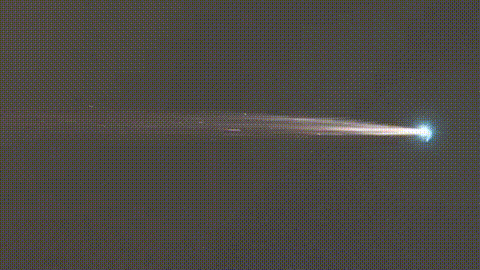
Figure 丨The ESA's ATV cargo ship entered the atmosphere and broke up.
3. Debris burnout
After the collapse of the spacecraft debris continues to fall, they continue to be dual role of pneumatic heat and aerodynamic force and burning melting, and most of them will be consumed before reaching the surface, does not affect humans. Only two types of debris will eventually land on the ground. The second is some smaller pieces, which have fallen to very low speeds before they burn down and eventually fall to the ground. Compared with the previous 15-20 tons of gun series station skylab, the United States, of 77 metric tons and 140 tons of mir space station, the fall of the Tiangong-1 weighs about 8.5 tons, do not say to go up what "monster", so more can't do any harm to human or influence.

Figure 丨Mir space station.
In fact, from the 1960s to the present, more than 15, 000 tons of debris have fallen back to earth, but have never harmed residents in densely populated areas. Falling debris from a recent human history also is first clips debris falling American rocket in 1997, was passed with the Oklahoma city Lottie Williams, but did not hit, the parties also was not injured.

Pictured: Lottie Williams and the debris she passed by.
According to a rough estimate of the average lifetime is the possibility of being is one in 12000 m, in the period of the outbreak of meteor shower, per hour, about 1000 ~ 1000 meteorite fall to the earth, in this case, the ordinary people of more than 200 g of meteorite hit probability is only one in 700 million m, and, by contrast, ordinary people by the Tiangong-1 such fragments of the spacecraft hit probability only to one over one million, small to one over one trillion, it is more distant than the chance of winning the lottery.
Masonry Tiangong
In September of 1992, China established the manned space "three-step" development strategy: the first step is to launch a manned spacecraft, built a preliminary form a complete set of experimental manned spacecraft project, to carry out the space application experiment; In the second step, we will break through the technology of spaceborne activity and space shuttle rendezvous and docking technology, launch the space laboratory, and solve the problem of space application with certain scale and short-term care. The third step is to build a space station to solve the problem of large-scale, long-term care of space applications. With the success of Shenzhou v and Shenzhou vi mission, the first step of the project is achieved. The success of the Shenzhou vii mission marks the key technology of China's astronaut space activities.

Pictured 丨Yang liwei of Shenzhou 5.
On September 29, 2011, 21 when 16 minute 03 seconds, tiangong 1 target spacecraft blasted off from the jiuquan satellite launch center, in the 1630 days of orbiting, tiangong 1 not only completed the established mission, also more than originally the design life of two years, the actual on-orbit four and a half years, extended and carry out a number of technology test. On March 16, 2016, the tiangong-1 spacecraft officially terminated the data service and completed its historical mission.
As the first manned space test platform independently developed by China, Tiangong-1 is 10.4 meters long, with a maximum diameter of 3.35 meters, and the internal effective use space is about 15 cubic meters. On November 3, 2011, Tiangong-1 and Shenzhou viii successfully completed the automatic rendezvous and docking mission of China's first space vehicle, and conducted a second automatic rendezvous and docking. After that, tiangong-1 successfully completed its mission of docking with two other Shenzhou spacecraft. Tiangong-1 and Shenzhou 8 and the success of the Shenzhou 9 rendezvous and docking mission, marks a breakthrough and master the automatic and manual control rendezvous and docking technology, become the world the third independence to master spacecraft rendezvous and docking technology of national space; The shenzhou-10 mission is the final phase of the first phase of the project.

Tiangong-2.
China launched the Tiangong-2 space laboratory, the first real space laboratory in China, at 22:04 PM on September 15, 2016. The space laboratory is a manned space vehicle carrying out space experiments, which is smaller than the space station and is the prototype of the space station. The Tiangong-2, with a total length of 10.4 meters and a maximum diameter of 3.35 meters, was built in the experimental module and the resource module, with a solar wingspan of about 18.4 meters and a weight of 8.6 tons, which is designed to last 2 years. On October 19, 2016, at 3:31 am, the shenzhou-11 spacecraft and Tiangong-2 automatic rendezvous and docking were successful.
Due to Tiangong-1 and Tiangong number two performances, China has cancelled the original program will launch Tiangong-3, to build "Tiangong" space station directly, and shortly before the first foreign exposure of the core module is China's manned space station "three steps" strategy of the third step, the key to build a space station starting point, the core module of cloth in total more than 300 sensors, signal measurement of more than 900 road. According to understand, T configuration on the whole, China's space station consists of a core module and two lab, the weight of each module are in more than 20 tons, at the same time it can docking two manned spacecraft, "Shenzhou" spacecraft, a cargo ship ("Tianzhou" spacecraft). By 2022, when the entire space station is fully operational, it will weigh nearly 100 tons.
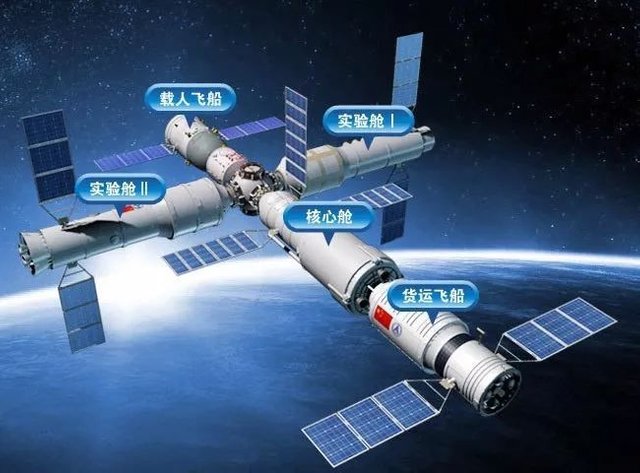
The construction of the Tiangong space station (concept)
The overall name of China's manned space station and the five names of each module and cargo ship are as follows:
The manned space station is named "Tiangong", code-named "TG".
The core module is named "Tianhe", code-named "TH";
Lab Ⅰ named "Wentian", code-named "WT";
The experimental module was named "Mengtian", code-named "MT";
The cargo ship was named "Tianzhou", code-named "TZ".
With the coming of China's space station era, astronauts have been fully engaged in the training of the space station, and the third batch of astronaut selection is ready.
The arrival of commercialization has ushered in a new atmosphere for the global space station.
In recent years, successful commercial space companies have narrowed the gap between the masses and space. And in addition to the inspections such as rocket and its and OneWeb ambitious space constellation, all kinds of "carrot and stick" space station program also high-profile, among them with Bigelow Aerospace companies (Bigelow Aerospace) inflatable space station is the most famous.
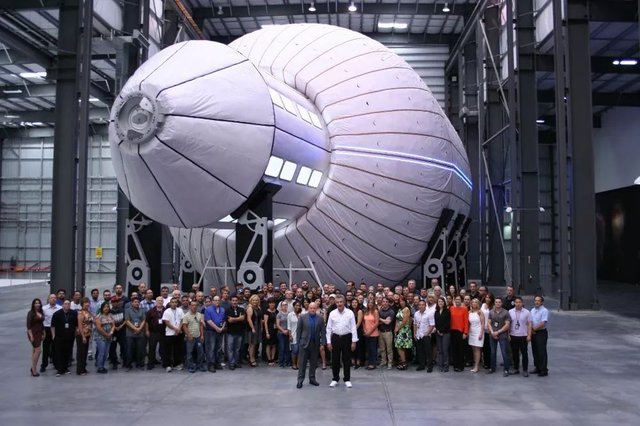
This is the Bigelow team.
Bigelow Aerospace, founded in 1999 by American hotel magnate Robert t. Bigelow, currently has three products, Genesis, BEAM and B330. Compared with the traditional space station, inflatable space station has a light weight, folding, high efficiency, reliable and convenient implementation, will be the future solve the problem of extended module, large space station habitation module built one of the effective ways.

Robert t. Bigelow.
In April 2016, Bigelow test extensible modules BEAM through the ferry was sent to the international space station, a two-year test, according to understand, BEAM after filled can provide 16 m cubic meters of space. So far, BEAM has performed well in orbit, and its radiation shielding performance is more than that of traditional aluminum modules. This means that Bigelow will then be able to send its real massive space station module, the B330, into space. Unlike BEAM, the B330 has 330 cubic metres of space, about a third of the international space station. Bigelow has assembled several different B330 full-size prototypes and is testing them for quality. In the meantime, the company has teamed up with the United Launch Alliance, ULA, to Launch the B330 into space with their Atlas V.

B330 section view.
Recently, Bigelow has further news, they split out solved, a BSO commercial aerospace company, is developing the inflatable space station of purpose is to provide sales, operations and customer service support. According to Bigelow CEO Bigelow's introduction, as the end of the international space station in 2025 ~ 2028, low-earth orbit space station business will usher in a new climax, and private enterprises will play an important role in it. To seize this opportunity, Bigelow is preparing to build a huge space complex, with the first projects being b330-1 and b330-2, which are expected to launch in 2021. To achieve this, BSO plans to build a new manufacturing plant in Florida or Alabama.

China is also carrying out a similar research and development program of inflatable space station, and the total body department of China aerospace science and technology corporation has successfully completed the water pressure test of inflatable space module. The design and process method of inflatable space capsule was mastered, and the structure of the capsule with a diameter of 2 meters and a length of 4 meters was completed. In addition to Bigelow, another company, Axiom Space, plans to build a more traditional aluminum Space station on the international Space station. Take them to build this business space station costs $1.5 billion, far below the $100 billion cost of the international space station, according to the plan, the commercial space station is expected to be completed in 2024, the international space station will stop using it.
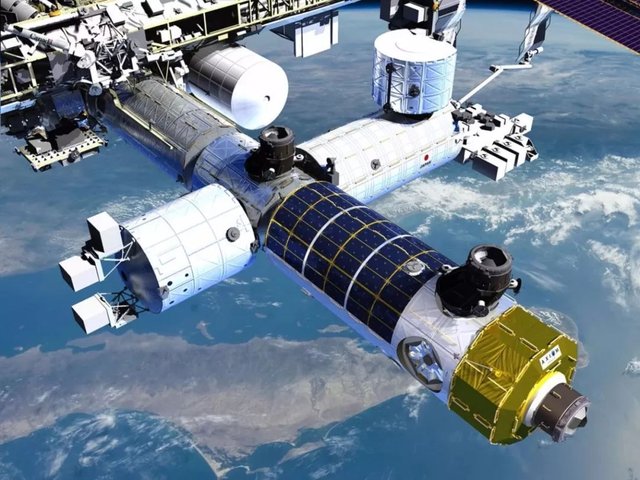
Axiom Space station (concept)
Of course, in addition to the commercial company's plans, the U.S. official space station has not stopped. Some in the United States have offered to hand over the international space station to commercial companies, a possibility that still exists. On February 12th Mr Trump's government unveiled a budget for the 2019 fiscal year, $19.9 billion for NASA. According to the budget, two signs are clear: first, the international space station has turned to "privatisation", followed by the trump administration's support for the moon programme. NASA will continue to advance, called "Lunar Orbit Platform - Gateway" of the moon's Orbit construction plan of the station, before put forward to replace the "Deep Space Gateway" station.

Lunar Orbit Platform - Gateway (concept)
And around the world, in addition to outside the United States, Russia has retired from the international space station after building its own space station program, in addition to "peace" 2 unreliable, they also put forward is called the Russian tracking station (ROS) in the space station plan, it with science, multi-purpose lab, harmony node and scientific energy module three compartment as the core. But in Russia's current domestic situation, it is not likely that they will be able to carry the ROS independently, perhaps even more realistically with the United States on the ground moon project. Europe, of course, also not too will fall in this respect, the German space agency has released called Orbital-Hub station design, which based on the ESA space station technology, combined with Bigelow B330 inflatable space expand living space, to go outside load extension, design also is very clever. In this way, China's Tingong will not be lonely in the future.

Future concept space station.
If the above space station program can take place as scheduled, large and small that the sky above us will usher in unprecedented lively scene, with the help of the power of the business, more and more ordinary passengers may realize their dream of space travel. In the more distant future, these large and large space stations in the near earth orbit will be the springboard for humans to go to Mars and deep space to help us explore further interstellar space.
From:
http://www.sohu.com/a/226992154_354973?_f=index_chan30news_11